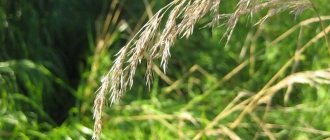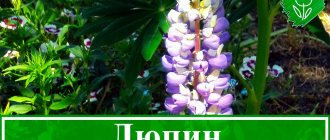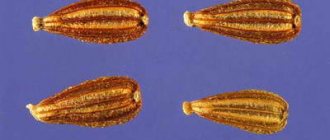Author: Elena N. https://floristics.info/ru/index.php?option=com_contact&view=contact&id=19 Category: Garden plants Published: June 22, 2018Last edits: November 04, 2020
- Growing conditions
- Alpine chickweed (Cerastium alpinum)
Cerastium (lat. Cerastium) is a genus of herbaceous perennials and annuals of the Carnation family, growing in temperate regions of Eurasia, Australia, North Africa, as well as South and North America. There are about 200 species in the genus. The scientific name comes from a Greek word that means “horned” and describes the shape of the fruit of some geraniums. Some species of this genus are very popular in garden culture.
Common types
In total, the genus of jasmine contains more than two hundred species. Only a few of them are actively used in gardening. The reason is simple: despite the external similarity of the species, different plantlets require different growing conditions, and not every species is able to take root in a man-made flower garden.
Below are photos of flowers and descriptions of the species that are most often used by gardeners:
Jaskolka Bieberstein
The most common species in Russia. The homeland of the species is the rocky slopes of Crimea. The plant grows up to 20 centimeters in height, the leaves are narrow, covered with down, rarely exceeding a length of 4 centimeters. The species blooms in the second half of spring, the inflorescences are perfectly white.
It is also important that the species is listed in the Red Data Books of the CIS countries, so removing the plant from the wild is punishable by law.
Felt cleaver
The species is native to Canada and is now distributed throughout Europe and North America. It stretches up to 30 centimeters in height, but grows to a greater extent in width: one plant covers an area of up to one square meter. The foliage is abundantly covered with down, making it appear silver rather than green.
The flowers are white and small, but their size is compensated by the huge number of buds produced. The flowering of the tomentose sprout itself begins towards the end of May and lasts about a month.
alpine jasmine
In the wild it is found in mountainous regions: Altai and the Alps. This species is the shortest of all available for garden cultivation - the plant height does not exceed 15 centimeters. The foliage is small, silvery-green, but the flowers of the species are disproportionately large and can reach up to 2 centimeters in diameter.
This species is ideal for forming alpine slides in the garden, but it is worth taking into account the capriciousness of the species: the alpine chickweed has low frost resistance, does not like too high temperatures and direct sunlight, and is extremely sensitive to excess moisture.
Most often in Russian gardens, these three species are found. Much less common to see:
- Purple chickweed - highly frost-resistant;
- Large-flowered cleaver - has the largest inflorescences, up to 3 centimeters in diameter. It also differs in the timing of flowering; in this species it occurs in the second half of summer.
- The snow-white moth is a species with high decorative qualities. The foliage forms a continuous silvery carpet, often used by European landscape design professionals. A photo of a moth that forms real rivers and lakes from snow-white flowers is the best proof of this.
The plant is not demanding on growing conditions. By following the simple principles of caring for flowers, even a not very experienced gardener can cope with its cultivation on the site.
Botanical description
Reeds are herbaceous plants with ascending or erect stems, reaching a height of 10 to 30 cm, usually pubescent, but sometimes glabrous. Representatives of the genus have a powerful but superficial root system, capable of growing even in rocky soil. The shoots of the sprout are creeping and well-rooted. The leaves are opposite, small, entire, usually densely pubescent. Flowers with white, mostly double-cut petals reach a diameter of 2 cm. The fruit of the yastilok is an oblong cylindrical box with brown seeds.
Growing seedlings
There are 3 ways to obtain seedlings.
Germination of seeds
Growing seedlings from seeds is the most difficult method, requiring a lot of time and effort.
For germination, seeds are sown in containers with light soil at the end of April. The soil in the container must be moistened every 2-3 days, preventing it from drying out.
The first shoots will appear in two weeks; seedlings should be planted in separate pots after another couple of weeks, when most of the shoots have formed one strong true leaf.
When the seedlings become stronger and develop several true leaves, they can be planted in open ground.
Cuttings
Cuttings are the most popular and easiest way to propagate jasmine. Cuttings separated from the mother plant in the autumn can be immediately planted in open ground. You should not do cuttings in the spring - the procedure will take too much energy from the plants.
Dividing the bush
Dividing bushes can be done both in spring and autumn. This procedure can be carried out simultaneously with a planned plant transplant: the plant needs to change its growing location every 4 years.
Over 3-4 years, the plant extracts most of the nutrients it needs from the soil, so after this period the flower requires replanting.
Care
Caring for perennial weed, as well as planting, is simple and minimalist.
The main thing is on time:
- add nutrients;
- remove weeds;
- water as needed.
Then the area will be covered with a white carpet of flowers.
In order for the plant to remain healthy and powerful, throughout the season it is necessary:
- carry out several feedings;
- periodically prune the bush;
- Weed the area regularly.
To create an attractive bush you need:
- in early spring, remove withered and lifeless leaves and branches;
- clear the soil around the bush of weeds;
- properly prepare the soil for planting and ensure that it remains nutritious throughout the season;
- Water the flower bed once a week;
- after flowering stops, remove shoots so that the bush does not lose its attractiveness;
- in case of strong growth, trim the stems slightly;
- carry out shortening after flowering, ensuring a neat appearance of the clubs until the fall;
- do not cover the flower, because it feels great in winter in central Russia.
Spraying, watering
It is believed that the chickweed is highly drought-resistant. In this case, it is necessary to periodically moisten the soil around the bush. In the absence of rain, watering is carried out once a week. If there is enough rainfall, then you need to make sure that the roots do not dry out from the moisture stagnant at the roots.
The hairy edge of the stems and branches of plants delays the evaporation of moisture and allows the flower to use it quite sparingly. In addition, the cushion of stems spreads widely across the ground, preventing it from drying out too much. The main thing is to ensure that there is no excessive moisture under the plant. This will lead to his death.
Top dressing
If fertile, mineral-rich soil is chosen for planting the plant, then fertilizing may not be necessary at first. In the future, you need to apply complex fertilizers with minerals or organic matter at least 2-3 times during the summer. It is best to dissolve the substances in water and water the bushes with this mixture.
Transfer
Such a beautiful cultivated plant, thanks to its aesthetic qualities and long flowering, has gained popularity not only among landscape designers, but also among gardeners. The plant has the property of growing quickly, so you have to frequently replant the bushes, rejuvenating the old flower and creating a new flowering bush.
This needs to be done every 5 years. In this case, several so-called plots are formed, which are planted in a new place.
Trimming, tying, pinching
To preserve the health and beauty of the bushes, the tree is pruned.
This provides:
- normal development of color in a certain area;
- prevents the plant from spreading into other areas;
- preserves the neat appearance of plantings;
- the possibility of using sections for further reproduction;
- bush rejuvenation.
While maintaining the shapes specified by the designer, the rug is shortened by cutting off the excess segment and lifting it above the ground. The rooted part is cut off at the root, carefully using garden shears or pruning shears. Dried or rotten parts of the plant are definitely removed. This type of care allows you to hope for a second flowering in one season.
Sometimes such work does not require the use of special tools. Some shoots are so tender that you can pull them out with your hands without much effort. Replanting an old bush makes it stronger and allows you to expand the plantation. Some varieties of parsley require protection from severe frosts. When buying a flower, you need to ask the seller about the rules for caring for it.
If shelter is required, you must do one of the following:
- cut branches completely to ground level;
- partially prune the bush, removing old, damaged or rotted branches;
- Leave the plant's natural appearance until next spring.
The best time to replant seedlings is autumn. During this period, you can easily create new plantings. Another reason to prune bushes is the rapid growth of the weed and its ability to destroy nearby plants. To preserve decorative properties, shoots are removed evenly on all sides of the bush. However, dry, diseased, broken shoots and faded buds are removed regardless of the design plan.
Temperature and humidity
The plant is perennial (planting and caring for the plant is not very difficult), as a light-loving plant, it easily survives drought and scorching sun rays if they do not last long. The area where the flower will be planted must be open. When growing at home, it is better to place the containers on the balcony. If there is insufficient lighting, additional lighting must be arranged.
The flower can grow and bloom well on stones and mineral-poor soil, but it is unlikely to survive high humidity or flooding of the area. To preserve the plantings, you need to organize a drainage system before planting. Air temperature is of little importance for plant flowering. Yaskolka tolerates heat and frost well. It survives drought and does not stop blooming when strong winds blow.
When used to create design compositions, large and strong plants are chosen as companions, which cannot be absorbed by an overgrown woodworm. Low and delicate plants are not suitable for such a neighborhood.
Soil and fertilizers
The plant will feel best on light soils that are not prone to stagnation of moisture and are not too nutritious.
It is worth remembering that in nature, the flower grows on sparse rocky slopes, so the conditions for artificially growing the flower should be as similar as possible to natural ones. The soil into which sand will be added, or alpine slides made of stones, is ideal for planting.
For a similar reason, the plant does not require fertilizing, at least organic: an oversaturated plant will produce lush green foliage, losing its original decorative effect.
Peculiarities
Yaskolka has its own growing characteristics and a number of disadvantages. The plant has medicinal properties and is rich in coumarin and beneficial flavonoids. Its decorative qualities are attractive and practical.
Among the negative points we can highlight:
- rapid spread throughout the area;
- destruction of nearby plantings;
- the difficulty of ridding the garden of a plant if necessary.
Excessive distribution of this plant on a plot or even in agricultural fields significantly reduces crop yields. To destroy unwanted plantings, you need to use powerful chemicals. Spraying with herbicides is carried out before harvesting fruits in cases where there is significant weed infestation.
It is sometimes recommended to use active substances such as Glyphosate after harvesting crops. This preventive measure will prevent the sprouting of the sprout next year.
The beautifully blooming cherry blossom has decorative qualities. The snow-white blanket of its flowers attracts attention with its grace. In addition, it is unpretentious in care and is well protected from diseases and pests. To maintain the health of the planted perennial tree, it is properly cared for. It is necessary to fertilize the plant and weed it from weeds.
Landing location
It is worth carefully planning the planting scheme for the flowerpot in the garden so as not to harm both the flower itself and its forced neighbors. First of all, it is worth considering that neighbors are still necessary: although the plant loves sunlight, too hot summer rays can harm the plant.
Therefore, especially when planting in the southern regions, the plant requires a shrub or tree neighbor that can slightly shade the flower without completely depriving it of light.
Popular varieties
Currently, the unusual and very diverse moth has about 200 species. Florists distinguish several varieties:
| View | Description |
| Bibirshtein |
|
| Felt |
|
| Snow-white |
|
| Silver |
|
| Alpine |
|
| Field |
|
Planting scheme and thinning
As mentioned earlier, one plant is capable of covering an area of up to one square meter. Therefore, when initially planting, it is worth keeping a distance of at least 30 centimeters between seedlings so that the flowers have space for active growth and development.
Subsequently, it is recommended to carry out sanitary thinning of the plantings: at least once a year, in the spring, remove old, weakened plants, as well as those shoots that develop in a direction unfavorable for the gardener.
The recovery time of the plant after pruning is the only stage of its life cycle when it is permissible to apply complex fertilizers to maintain the vitality of the plant. Such a procedure will not only improve the condition of the flower garden for the current season, but will also generally have a beneficial effect on its longevity and health.
History of selection
This crop belongs to the Clove family. The variety was developed based on the wild form of the Bieberstein's plant, which was cultivated in 1820. Thanks to the selection, the decorative qualities of the perennial were improved, as well as its winter hardiness. But there is no official data on who is the originator of this variety.
Jaskolka Snow Carpet appeared at the end of the last century. But until recently it was not popular among flower growers, until landscape designers turned their attention to it. Now this ground cover can be found in many garden plots.
Problems during cultivation
The plant is resistant to damage by various diseases and pests, but if the rules for caring for the flower are violated or the planting site is inappropriate, certain problems may still arise.
Weak flowering
Reason: lack of nutrients or lack of pruning. To stimulate flowering, it is necessary to carry out sanitary pruning next spring and carefully feed the plants with complex fertilizer.
Fungal diseases
Reason: excess moisture at the roots, caused either by too frequent watering or by a poor planting location.
Treatment with antifungal drugs will only be a temporary solution that destroys the existing colony of pathogens, but without changing the growing conditions, the problem will return.
Jaskolka is an ideal plant for forming flower streams that are popular in landscape design. Even outside the flowering period, the plant looks quite bright due to its foliage, and the love of the tree for sandy and rocky soils allows it to be used in the design of alpine slides.
Use in landscape design
The jar is good:
- in alpine hills, rockeries (small rocky gardens);
Chillweed, Echium and Sisyurhynchium varieties Devon Skies look good together - in the foreground there are mixborders and mixed flower beds;
- as a soloist for “Flower Flower Stream”.
Thanks to their plastic branches and active growth, the shoots master surfaces of any shape, filling empty spaces, like water in a river bed. This effect can be used to create flower rivers flowing around trees, benches, stones, path slabs; Thanks to the plastic branches and active growth, the shoots master surfaces of any shape, filling empty spaces, like water in a river bed - in carpet plantings;
Reeds are planted in flower beds to frame compositions of perennials. - in borders, ridges;
The plant looks good as a lining for a border flower bed - for the design of supporting walls;
Felt scraper is often used in compositions to decorate supporting walls - in terraced gardens.
“Clouds” of jaspers highlight the topography of the terraced garden
What to combine with
The silver foliage of the carrion looks beautiful with different plants:
- contrasts with dark-leaved bells and armeria;
Cliffs go well with dark-leaved plants - goes well with blue and blue colors: sisyurinchium (blue-eyed), echium (or, as it is popularly called, bruise);
- will not get lost in the “lunar garden” - next to other flowers of a cold silver-white color scheme;
- looks great with stone chips, gravel, cobblestones, decorative mulch, and paved paths.
Analogues of the yaskolka
There are quite a few plants that can create a bright carpet:
- Arends' saxifrage;
- false sedum;
- arabis;
- Delosperma Cooper.
But Bieberstein's Jaskolka occupies a special niche. It is not easy to find such an ornamental crop that retains its properties in dry, sunny areas. Most crops in such conditions lose their attractiveness in whole or in part, but the cherry blossom delights with a lush foam of white flowers.
Yaskolka planting and care
Photo of the yaskolka
Trimming
The tree needs to be trimmed periodically. In the spring, you should remove damaged branches, and during the season, cut off the leaves from below, because they rot. During the growing season, the plant is pruned not so much as a therapeutic and preventive measure, but to give it a rounded shape. Thanks to care in the month of August, budding will be guaranteed. When the plant has flowered, it is necessary to remove weakened flower stalks. It is also important to understand the issue of frost resistance. After all, there are varieties that need to be covered with spruce branches for the winter.
Grooming activities
The bushes have enviable resistance to frost and drought. In the summer they are fed twice with purchased mineral fertilizers or organic matter (bird droppings, mullein). The soil should be loosened and weeds removed.
Long-lasting plantings require a rejuvenation procedure every five years by dividing and replanting. They react positively to this operation, easily settling into their new location.
Expanding or injured shoots are removed in the spring, maintaining the configuration of the flower bed.
Trimming faded flower stalks will not only preserve the attractive appearance of the meadow, but will also cause re-blooming.
Reproduction methods
Bieberstein's cornea uses all possible methods to reproduce. This is typical for plants that live in harsh conditions. In its natural environment, the cornea can reproduce:
- seeds;
- with the help of stolon-like shoots.
When propagating in gardens, additional methods appear: cuttings, layering and division of rhizomes.
Comment! A large number of seeds in a plant indicates either their poor germination or the fact that most of the seedlings die before the vegetative age.
Growing Bieberstein's moth from seeds is the most labor-intensive way. Seedlings require special “mountain” conditions and do not tolerate excess moisture. But after the difficulties of the first year, the grass is propagated in other, more effective ways. If there is no one to buy planting material from, the seeds are worth the labor spent on them.
Spring is the ideal time to propagate Bieberstein's cornea by layering. You just need to wait until the new shoots reach a length of 15-20 cm. Since the stems of the grass are creeping and take root easily, it often propagates by layering without permission. That is, the owner doesn’t even have to make an effort to get a new bush. And to guarantee rooting, it is enough to sprinkle the layering with soil. In the fall, the new plant can be transplanted to a permanent location.
The transplanted Bieberstein's moth will take root better if you cover the borders of the joints from drying out
Cuttings are best done during flowering. If this is not possible, the procedure can be performed earlier or later. The moth will take root.
The shoot is cut off, excess leaves are removed from it and deepened into the soil. Here you need to maintain a balance: the soil should not be too wet or too dry. For better rooting, the cut stem is covered with a jar or a cut five-liter PET bottle, since the cutting needs a greenhouse effect. But you can root planting material in ordinary greenhouses.
Dividing rhizomes is best done in the fall after the seeds have ripened. Although the seedling can withstand the spring procedure. A horizontal root system greatly simplifies the task. In fact, the turf needs to be trimmed here. Under a part of the bush, the soil is carefully cut to a depth of about 20 cm. The separated seedling along with the soil is transferred to a previously prepared place, carefully laid, squeezed and watered with water to compact the soil.
Comment! Before dividing, the stems need to be trimmed to better see which part needs to be removed.
Useful qualities
All parts of the plant contain saponins, coumarins, flavonoids and valuable acids. Raw materials are harvested in the flowering phase. Decoctions are used to strengthen the immune system and as a sedative. They warn:
- Avitaminosis.
- Haemorrhoids.
- Conjunctivitis.
- Oncology.
Photos of the tree clearly show how wonderfully it transforms a garden plot, decorating rock gardens, rock gardens, ridges, and mixborders.
The image of artificial white streams flowing around garden structures, trees, benches and enlivening paved paths, supporting walls and cobblestones is magnificent.
Bluebells, daisies, armeria, calendula, and sedum look great next to it. This is a real silver highlight of the landscape, giving it exclusivity and unique charm.











